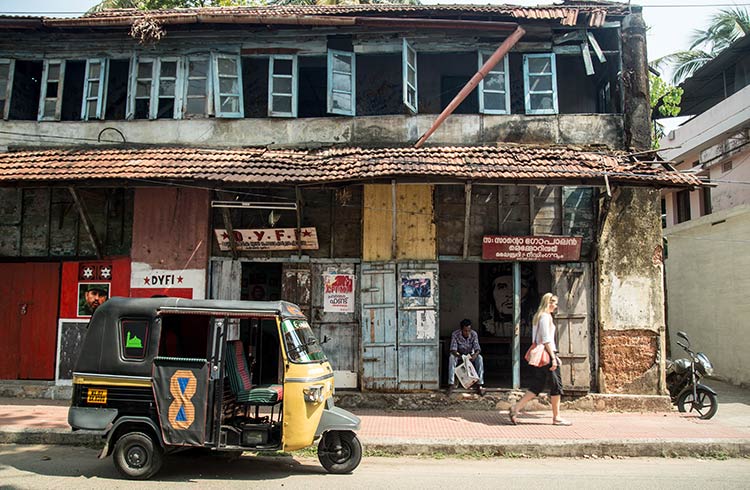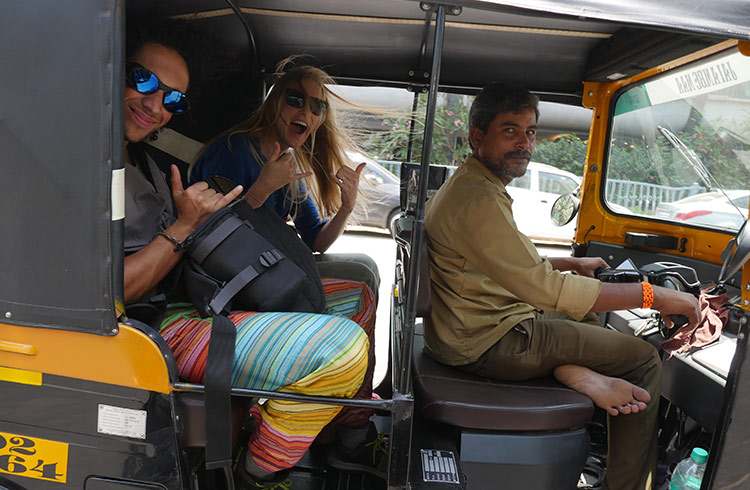Is India a Safe Destination for Women Traveling Alone?
Mariellen Ward has lived and traveled around India alone, and has only encountered a few uncomfortable incidents. Here, she shares her tips for safe travel, and tell us about some common misunderstandings.
 Photo © Julian Manrique, WhereNext.com
Photo © Julian Manrique, WhereNext.com
India’s massive 1.38 billion population, an ancient culture, and rapidly changing attitudes combine to create one of the world’s most fascinating destinations. But, how safe is India for female travelers?
India could well be one of the most rapidly-changing cultures on Earth – and these changes are leading to tensions in society and confusion for visitors. Here are my strategies for safe travel, especially for solo women travelers.
- Then vs now
- From Eve-teasing, to sexual harassment
- Is India unsafe for women?
- Strategies to stay safe in India
- Listen to The World Nomads Podcast: Women in Travel
Then vs now
In 2005, when I first started traveling in India, the question of safety was not as topical as it is today.
As a Canadian who had never traveled alone in a foreign country, I knew it wouldn’t be an easy place to travel around, but I was more worried about getting sick, feeling lonely, or just not being able to cope with the “heat and dust.”
Even as a solo female traveler, who had never been on such an ambitious trip – six months across the length and breadth of the subcontinent – I wasn’t particularly worried about my safety.
Times have changed. I have been traveling and living in India over the past 14 years. Now, safety – especially travel safety for female solo travelers – is a hot topic.
I have lived in the capital Delhi, which is the most notorious city for crime in the country, and now live in the northern city of Rishikesh, the Yoga capital. When I travel, I usually do it alone. I’ve had very few uncomfortable incidents. I’ve been stared at a lot, followed several times by creepy guys, and groped twice. I’ve felt unnerved a few times, but I have never felt threatened or unsafe.
From "Eve teasing" to sexual harassment
I was in India in December 2012 when the horrific gang rape and murder of a young Indian woman made headlines around the world.
I saw the country erupt in anger and felt the paradigm shift. The colloquial phrase “Eve teasing” became the much more accurate “sexual harassment” overnight.
A media onslaught followed, provoking several countries to issue travel advisories for India, and for the country to be painted as the “rape capital of the world.”
Since then, the issue of women’s safety has gained a lot of prominence.
More recently, in the fall of 2019, a spate of gang rapes and murders in Hyderabad and Unnao reignited concerns over women’s safety in India – for both local women and tourists. Several countries have issued travel advisories warning women not to travel alone or to remote areas; some even warn about safety even if traveling in a group. The United Kingdom travel advisory states: “There has been an increase in reports of sexual assault against women and young girls, including recent sexual attacks against foreign female visitors in tourist areas and cities. Women travellers often receive unwanted attention in the form of verbal and physical harassment by individuals or groups of men.”
Whether sexual assault is actually increasing, or whether there is just more reporting and more focused attention, is a difficult question to answer.
Is India unsafe for women?
I’ve been asked many times whether I think India is an unsafe travel destination. My answer is: that’s the wrong question. It’s not about safe or unsafe destinations – anything can happen anywhere. However, it’s unlikely most women traveling in India will face aggressive or hostile behavior. Staring and unwanted attention are common.
I think it’s far more worthwhile to ask about how you travel, rather than where. Are you practicing what I call ‘safe travel strategies’?
I also think that making women feel fearful of travel is a modern form of purdah (seclusion or secrecy), with sexist and misogynistic undertones.
If you look at statistics, most attacks against women take place in the home. Most women are raped or harmed by men they know.
There are no guarantees in life, but if you mitigate risk, and travel with confidence within your comfort zone, I think you can go just about anywhere you want.
I am comfortable and confident in India, and I think that’s what’s contributed to my enjoyment of travel there.
Having said this, India does present some greater risks – especially with regards to staring, unwanted attention, and sexual harassment – than other countries. There is a significant gender disparity in India, and you do come across some negative and outdated attitudes towards women – such as the film director who suggested women should carry condoms in case they are raped. It’s wise to be prepared, and be able to safeguard yourself, and take things in stride.
Strategies to stay safe in India
Here are a few safe travel strategies that I think are particularly important for India, and for female travelers.
1. Research
Do your research, and make sure you know and understand the culture before embarking.
For example, in India, the genders relate differently, and the basis of the culture is still very traditional.
You can’t relate to the opposite sex in India in the same way that you would in a western country. A casual, friendly word or gesture could be perceived as an invitation.
2. Dress appropriately
Aside from a few pockets, such as South Mumbai and Goa, India is still a very traditional society. This means you should follow the rules of society and dress modestly.
Most of the time I’m in India, I dress modestly, and very often, in Indian clothing – such as the three-piece suit known as a salwar kameez.
This inspires respect from locals and makes me blend in a bit more… as much as a tall-ish, blonde Canadian woman can blend in.
3. Attitude
As a Canadian, I was brought up to be polite. But when you travel alone, in a place like India, it’s more important to be confident than polite.
Trust your instincts. If you feel that someone is a potential threat, or is harassing you, walk away.
Don’t bother with politeness. Ignoring people who stare, beg, and the overly-intrusive is the best way to get rid of them.
If you are in trouble, don’t be afraid to call out for help. Social shaming plays a big role in Indian society, and the chances are good that aunties and uncles will crowd around and defend you – and heap shame on the badmash who troubled you.
4. Destination and location
As part of your research, find out which parts of India are more tourist-friendly, and which neighborhoods are considered safer. In Delhi, I recommend South Delhi, for example – an upscale residential area where you are less likely to run into touts, con men, drug dealers, and those who prey on tourists.
States such as Kerala and Rajasthan, which see a lot of tourists, are generally a better option for female travelers, and especially solo female travelers. Goa is a popular destination, but it also has a “party scene” and has been the location of crimes against women travelers. Stay away from drugs and the drug culture in Goa and wherever else it is found in India.
5. Travel and transportation safety
Travel in India can sometimes be overwhelming, confusing, frustrating, and tiring. It sometimes seems as if nothing is easy – even booking a train ticket. So, while in transit, women sometimes experience the brunt of unwanted attention and potentially risky situations. Take extra care with your bookings and with travel by train, plane, bus, and car. Try not to arrive late at night, especially at train and bus stations. Arrange for someone reliable to pick you up. Let others know your plans. And above all, do not trust random strangers at railway stations and airports offering you help or a ride. Use taxi apps such as Ola or Uber, or pre-paid taxi options.
You can also hire women drivers through companies such as Women on Wheels in Delhi – a taxi service staffed by women drivers – and Pink City Rickshaws in Jaipur. Look for the “Ladies” car on every metro train in Delhi, and on the commuter trains in Mumbai. There are also women-only compartments on long-distance trains. Not only will you feel safer, you will also enjoy the convivial atmosphere.
For more, read my top tips for women traveling in India, here.
Related articles
Simple and flexible travel insurance
You can buy at home or while traveling, and claim online from anywhere in the world. With 150+ adventure activities covered and 24/7 emergency assistance.
Get a quote


14 Comments